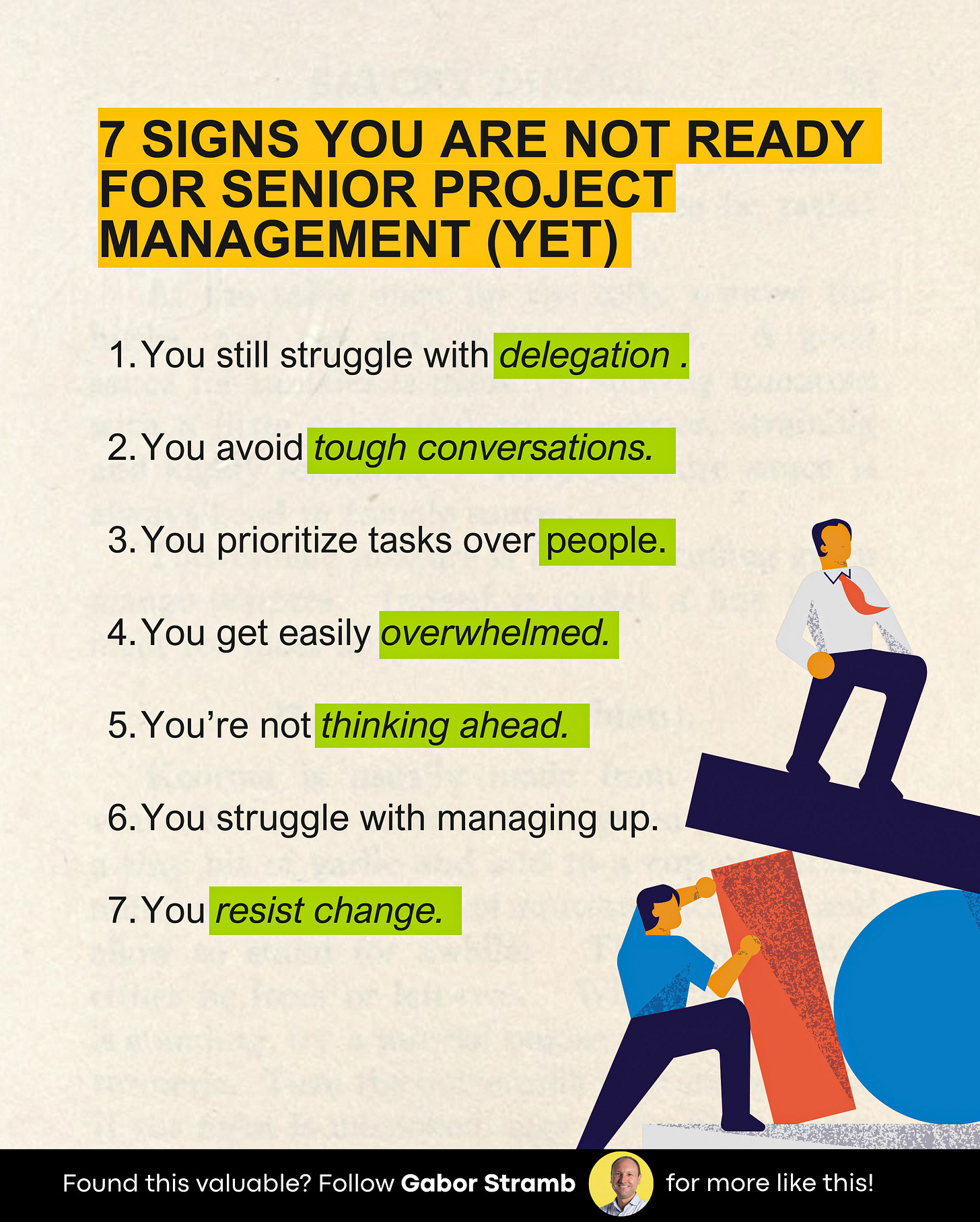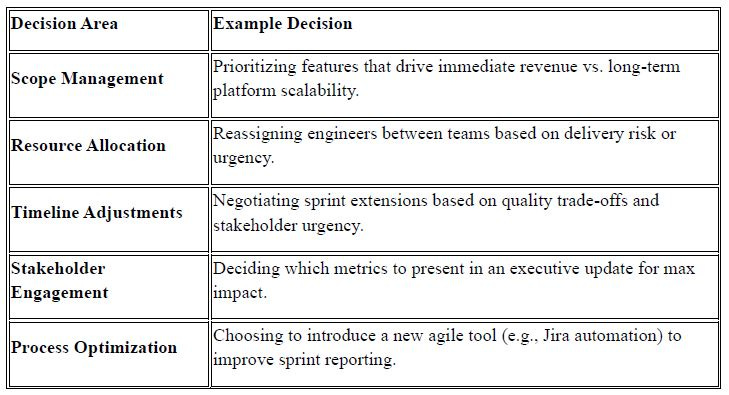Why Both Macro and Micro Goals Matter in Project Management?
Want to be a Senior Project Manager?
Hey, I’m Gabor, and welcome to the Agile Admiral weekly newsletter. Your Essential Resource for Project Management Excellence.
Each week, I tackle reader questions about PMP preparation, how to implement PMP into real-life projects, and a Senior Project Manager career.
For more: Project vs. Change Management | The Chaos Coordinator | PMP Passing Rate | Power of Lessons Learned | Critical Path vs Critical Chain | PM without authority is just a punching bag with a calendar |
What's Inside This Edition:
Want to be a Senior Project Manager?
Why Both Macro and Micro Goals Matter in Project Management?
Podcast: What great mentorship really looks like?
All about PMP in 8 weeks:
Newsletter: PMP-Daily // 90-minute Workshop on May 21 // PMP Operating System
Want to be a Senior Project Manager?
Read this before you ask for that promotion.👇
After working with 100+ PMs, I’ve noticed a pattern.
It’s not tools or certifications that hold people back.
It’s these 7 mindset traps:
🟡 You still struggle with delegation. You try to do it all. But leadership = trust.
🟡 You avoid tough conversations. You sugarcoat. You stall. But senior PMs lean into conflict with empathy.
🟡 You prioritize tasks over people. You treat your team like a checklist. That’s not leadership. That’s admin.
🟡 You get overwhelmed easily. Yes, pressure is real. But if you can’t regulate your emotions, how will your team?
🟡 You’re not thinking ahead. You execute the plan. But do you see around corners?
🟡 You resist change.PMs deal with change daily. If you’re clinging to the “old way,” the role will outgrow you.
🟡 You struggle with managing up. You think execs don’t get it. But influence goes both ways.
💡 Truth bomb: Want the title?
You need to grow into it, not just go for it.
👉 Which one hit hardest? Email me directly.
Why Both Macro and Micro Goals Matter in Project Management?
As Project Managers, we often focus on the big picture — the strategic, long-term goals (Macro Goals) that drive organizational success. But achieving those outcomes also depends heavily on the smaller, day-to-day targets we set (Micro Goals).
Day-to-Day Decisions a Project Manager Makes
Most of the decisions that a Project Manager makes are based on these Macro and Micro goals.
E.g.
What needs to be done to make sure that the team is able to deliver the Project on time?
How do I get Team B to allocate their timelines for Project Omega?
Here are examples of routine decisions that bridge both macro and micro-objectives:
Let’s dive into why micro goals are just as vital as macro goals in driving project success.
Macro Goals (Strategic-Level Objectives)
These goals align with the organization’s long-term vision and strategies. Think about these as your most important KPIs.
Key areas include:
Driving Organizational Strategy
Ensuring project outcomes directly support strategic goals like revenue growth, market expansion, or user engagement.
Aligning product/technical initiatives with OKRs and key business KPIs.
Delivering Enterprise-Scale Projects
Leading programs across business units or product lines.
Managing scope, timelines, and budgets to ensure successful delivery.
Cross-Functional Collaboration
Harmonizing efforts across Engineering, Product, Marketing, Sales, and Ops.
Acting as a bridge between technical and non-technical stakeholders.
Strategic Risk Mitigation
Proactively identifying dependencies, regulatory constraints, and technical risks.
Influencing leadership decisions through data-driven insights.
Stakeholder Visibility & Trust
Building confidence with executives through transparent communication and governance.
Providing effective status updates and executive reporting.
Success Metrics Management
Monitoring KPIs and performance indicators tied to project outcomes.
Ensuring continuous alignment with business value.
Micro Goals (Operational Excellence)
Execution-focused goals that evolve daily or weekly to keep teams on track. These goals complement the Macro goals to make sure that we are able to successfully deliver the Macro Goals. They go hand in hand.
Sprint and Milestone Tracking
Monitoring the delivery of story points and sprint objectives.
Ensuring agile ceremonies and team velocity are on point.
Issue Resolution
Quickly addressing blockers or bottlenecks.
Escalating or adjusting the scope to maintain timelines.
Dependency & Risk Management
Actively updating RAID logs and resolving inter-team dependencies.
Mitigating risks as they arise.
Team Collaboration & Conflict Resolution
Facilitating cross-team communication and clarity around priorities.
Resolving team-level conflicts promptly.
Continuous Improvement
Reviewing retrospectives and metrics for process improvement.
Implementing changes to enhance throughput and reduce delays.
Boosting Team Morale
Celebrating milestones and recognizing achievements.
Fostering a supportive and motivated team environment.
Macro and micro goals are two sides of the same coin.
Macro goals define where you're headed — the strategic vision and long-term outcomes — while micro goals determine how you get there through daily execution and team operations.
A Project Manager’s effectiveness lies in bridging both: aligning every task, sprint, and decision to broader business objectives.
Without micro goals, macro goals remain aspirations.
Without macro goals, micro efforts lose direction.
Success happens when both are in sync — driving impact with precision.
Podcast: What great mentorship really looks like?
Hosts: Daniel Hemhauser; Trevor Greenberg
Thank you for reading. Appreciate you!






